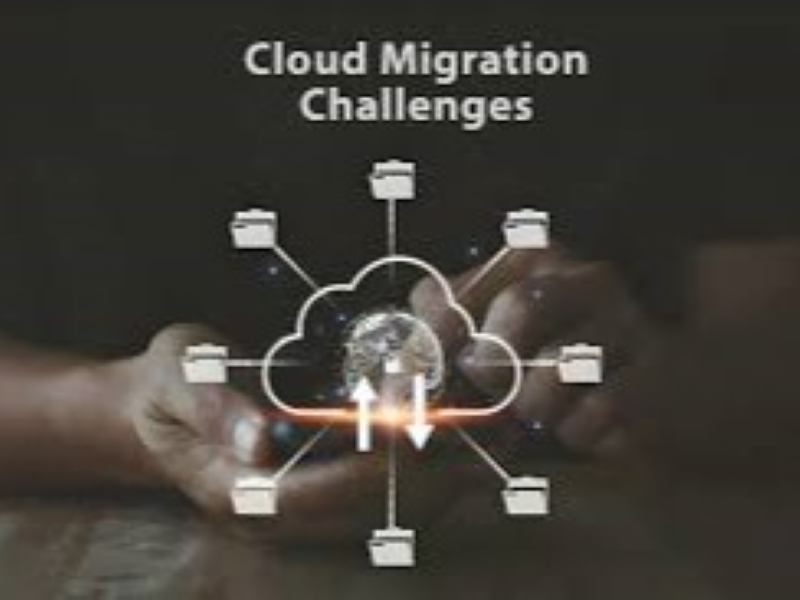- Conduct a thorough evaluation of existing infrastructure and applications to understand dependencies and identify potential issues before migrating to the cloud.
- Application modernisation and refactoring are necessary to ensure cloud compatibility, improve efficiency, and take advantage of the full potential of cloud computing.
Cloud migration is a huge undertaking that requires thorough planning and execution of a comprehensive strategy to successfully achieve business goals. Though it can deliver many benefits, a migration project poses some risks to an organisation and presents a unique set of challenges. In this blog, you can understand some common cloud migration challenges, to help you better prepare for a cloud migration.
1. Infrastructure compatibility and dependency issues
One of the biggest challenges in cloud migration is ensuring compatibility between their existing infrastructure, applications, and the target cloud environment. This challenge exists for organisations that migrate from self-hosting as well as migrating from other cloud service providers. To address this challenge, organisations must conduct a thorough assessment of their current infrastructure and applications before starting their cloud migration journey. Through evaluating current infrastructure and software to pinpoint likely incompatibilities, dependencies, and intricacies that may obstruct the transition workflow.
2. Data security and compliance risks
There is a security risk involved with any transfer of information, including when moving data to and from cloud platforms. When migrating to the cloud, ensuring data security and maintaining compliance with industry regulations are critical concerns. Cloud-hosted data and apps must follow the same security protocol as those on-premises. Because the transition can expose sensitive data to new vulnerabilities and necessitate adherence to different, sometimes more stringent, security standards that the cloud provider must meet. Failure to do so can result in costly data breaches, cloud compliance risks, regulatory fines, and damage to your company’s reputation.
Also read: Recommended security protocol for network address translation
3. Cost optimisation complexities
Calculating cloud migration costs can be one of the most challenging aspects of migration. Cloud providers, particularly hyperscaler cloud providers, often have intricate pricing models that can include hidden costs for data egress, storage, and other services. These complexities make it difficult to accurately estimate and predict cloud expenses. Organisations often underestimate the full scope of expenses incurred during data migration, such as new network connectivity needs to handle increased bandwidth demands and post-migration costs to run workloads in cloud environments.
4. Lack of effective cloud governance
One key challenge lies in the lack of clear roles and responsibilities, which can lead to chaotic cloud resource provisioning and management, potentially resulting in security risks, compliance violations, and unnecessary costs. Additionally, the absence of approval workflows and budgetary controls can lead to teams provisioning and consuming cloud resources indiscriminately, leading to cost overruns and potential compliance issues.
Also read: Navigating security governance in cloud computing
5. Organisational change management
While the technical aspects of cloud migration are complex, the human element is equally crucial for success. Adopting cloud technologies often requires a fundamental shift in business processes, workflows, and employee skill sets. Resistance to change, lack of buy-in, and reluctance to embrace new ways of working can pose significant challenges during the migration. Encouraging cross-functional collaboration, promoting experimentation, and celebrating successes can drive widespread adoption and empower teams to fully leverage the cloud’s potential.
6. Obstacles in cloud infrastructure transitions
Designing an optimal cloud infrastructure for organisations presents a significant challenge. Key considerations include choosing the right cloud service provider based on capabilities, pricing models, and service offerings. Scalability, performance optimisation, integration with existing systems, security, compliance, and effective cost management are also crucial factors. Addressing these challenges during the design phase ensures organisations can achieve a scalable, cost-effective, and high-performing cloud infrastructure that meets both current and future needs, avoiding potential pitfalls that could undermine the benefits of cloud migration.
7. Monitoring and incident management
Cloud migration introduces complexities in monitoring and incident management due to the dynamic nature of cloud infrastructure and reliance on third-party providers. Organisations must implement robust monitoring and logging strategies to gain real-time visibility into performance and security threats. This involves collecting and analysing log data to proactively address issues and ensure continuous availability. Additionally, developing strong incident response and disaster recovery plans is crucial for minimising downtime and effectively managing incidents or outages.
8. Network and connectivity bottlenecks
Cloud-based applications heavily rely on network resources, facing challenges such as network bottlenecks and latency issues due to the distributed nature of cloud environments. These issues can significantly impact user experience and operational efficiency, particularly for latency-sensitive applications and data-intensive workloads migrated to the cloud. To navigate these challenges effectively, organisations should optimise network performance, minimise latency through strategies like CDNs and proximity to users, and ensure secure and reliable connectivity between on-premises and cloud environments. Assessing and meeting bandwidth requirements are crucial to preventing performance bottlenecks and maintaining optimal application performance in the cloud.

